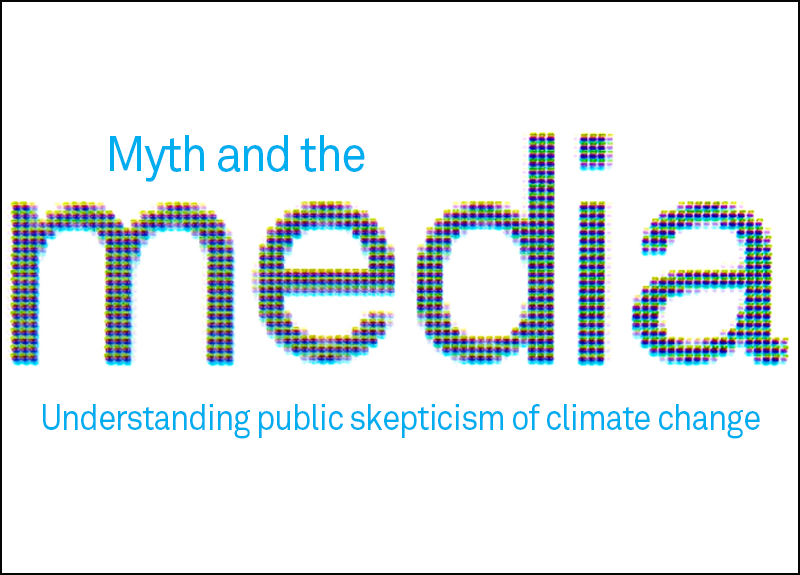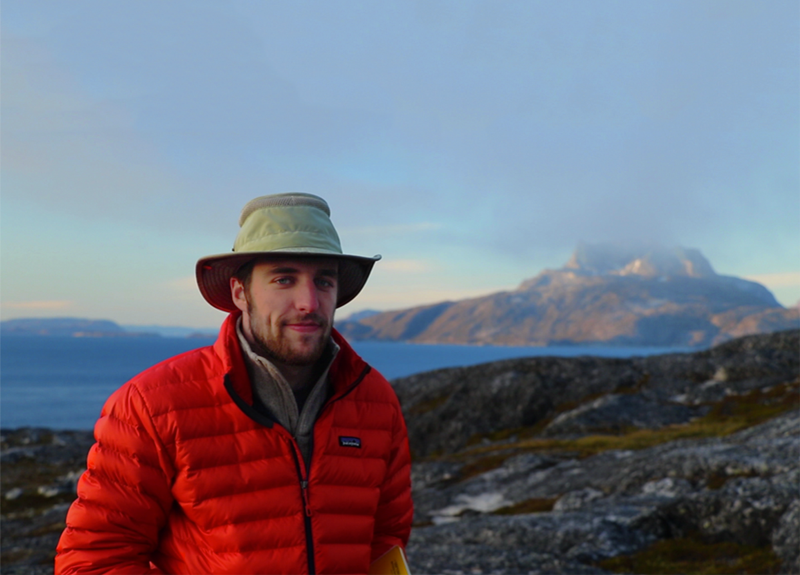Understanding public skepticism of climate change
In July 2017, a controversial article published in New York Magazine laid out the doomsday scenario for climate change. The author, David Wallace-Wells, opened “The Uninhabitable Earth” with “It is, I promise, worse than you think,” citing projections of famine, economic collapse, and biodiversity loss by the year 2100. Reponses to the article were all over the board, but many opinions gravitated around two conflicting ideas: We risk scaring people into inaction, and it’s too late to be subtle.
Wallace-Wells zeroed in on fear to say “when it comes to contemplating real-world warming dangers, we suffer from an incredible failure of imagination… But aversion arising from fear is a form of denial too.” It’s that same fear-induced inaction that causes people to delay retirement decisions or visits to the doctor in fear of receiving a bad diagnosis.
Fear is a key reason for resisting new information, and climate change is not immune, says Seth B. Darling, one of the authors of How to Change Minds About our Changing Climate.
“Human psychology leads people to believe there’s a less scary explanation because we don’t want to accept that climate change could negatively impact us,” Darling tells Empower in an interview. “Put simply, it’s scary to think about.”
Darling says the book, which walks readers through scientific explanations for some common misconceptions about climate change, is meant to arm members of the public with information they can use to respond to family members, colleagues, and friends who may be skeptical about climate change.
Darling, a scientist at Argonne National Laboratory, co-wrote the book with colleague Douglas L. Sisterson, a climate scientist. He says the idea was born out of climate questions he received at professional speaking engagements. Realizing that he didn’t have all the answers, Darling partnered with Sisterson to investigate the most common climate misconceptions and respond to each with an answer backed by strong science.
“The breadth and creativity of the skeptic arguments is just remarkable,” Darling says. “If people put this much effort into developing solutions, we would be much further along in making progress.”
As evidence of hostility to climate change science, he cites the November 2009 hack of the email server of the Climactic Research Unit at the University of East Anglia in the UK. Established in 1972, the CRU, with a staff of 20 research scientists and students, has developed several of the data sets frequently used by climate scientists around the world. The hack compromised sensitive information, including emails of CRU employees.
Climate change skeptics cherrypicked pieces of the emails that they claimed showed climate change was a global conspiracy developed and promoted by scientists. Dubbed “Climategate,” the claims were picked up by mainstream media reporting on the December 2009 United Nations Climate Change Conference in Copenhagen. The CRU responded by asserting that the email fragments were taken out of context and were evidence of nothing more than honest dialogue among colleagues. Committees quickly formed to investigate the allegations, and many major scientific organizations and associations stepped in to reinforce widely accepted scientific evidence of climate change. In the end, the committees found no evidence of fraud or misconduct on the part of CRU scientists, but the damage to their reputation had already been done.
Choose your own conspiracy (methods to study perception)
Half of Americans believe in at least one conspiracy in a given year, a phenomenon that isn’t linked to authoritarianism, ignorance, or political conservatism, according to a 2014 research finding at the University of Chicago that was published in the American Journal of Political Science. Among the country’s most enduring conspiracies are the existence of Area 51, the explanation of JFK’s assassination, and whether or not the moon landing was fabricated to boost national pride during the Cold War.
James N. Druckman, Payson S. Wild Professor of Political Science at Northwestern and associate director of its Institute for Policy Research, has used the finding about Americans and conspiracy theories to examine whether acknowledging someone’s general belief system may lead climate skeptics to accept scientific consensus about human-caused climate change.
Druckman, who has been studying climate communication since 2010 (and whose research is also supported by ISEN’s Ubben Program for Climate and Carbon Science), focuses on the interaction between how people deal with scientific information and politics. “We’re living in a more polarized environment than we were in 2010,” he says, “so it’s important to continue to test approaches toward realigning public opinion with the science.”
In a working paper, Druckman and his collaborator, Toby Bolsen of Georgia State University, cite a 2015 study that links the way people process scientific information to their desire to maintain status within their social group, prioritizing acceptance over accuracy. The research team took a page from other studies showing that validating the authenticity of people’s beliefs can mitigate their impulses to react defensively when those beliefs are challenged. Druckman and Bolden then applied this finding to climate science communication research.
“We found that people who believe that climate change may be a conspiracy can be moved to accept consensus information if their belief in conspiracies is validated in general.” — Prof. James N. Druckman, Northwestern
They studied people who tended to believe that climate change may be a conspiracy to see whether they could be moved to accept scientific consensus.
They divided study participants into two groups: control and experimental. Both groups were asked to review the following consensus statement:
Climate change refers to a long-term change in Earth’s climate due to an increase in the average atmospheric temperature. A recent report, “Climate Change Impacts in the United States,” produced by 300 expert scientists and reviewed by the National Academy of Sciences as well as agencies with representatives from oil companies, puts much of the uncertainty to rest by stating that climate change “is primarily due to human activities.”
The participants in the experimental group were also told that while a majority of people acknowledge that those in power work to mislead the public on many topics, human-caused climate change is not one of those topics. The idea was to acknowledge their general belief system, while also challenging it when it came to climate change.
“We found that people who believe that climate change may be a conspiracy can be moved to accept consensus information if their belief in conspiracies is validated in general,” Druckman says.
He adds that the people in the experimental group also wanted more information than those in the control group, which is an important indicator of future willingness to receive more information on the science of climate change.
Framing climate change to advance policy
The idea of scientific consensus commonly shows up in research studies, political debates, and media, and has been a key tool used by these players when speaking about climate change. How scientific consensus is used, and how it’s interpreted by an audience, depends largely on framing, a technique that puts an issue into a chosen context, to influence alignment on the issue.
Recognizing that science can serve as a valuable foundation for policymaking, and that this requires effective communication to stakeholders, Druckman worked with Arthur Lupia, a colleague at the University of Michigan, to publish a paper in the Oxford Handbook of the Science of Science Communication on framing climate change for effective communication.
While the act of framing an issue is intended to produce a desired result, Druckman argues that it shouldn’t be confused with manipulating an issue. Rather, he says, framing is a crucial way to communicate meaning that is relatable to the audience. It can change scientific communication outcomes to counter the tendency for people to rely on only recent information, to follow their partisanship blindly, and to dismiss sound science if some uncertainty is introduced.
In a saturated-information environment, in which there is simply too much information to process — for example, during an electoral campaign — people gravitate toward smaller, tangible bits of information to make their decisions (in this case, to vote). When it comes to assessing an incumbent running for office, Druckman says, the newer the information, the more likely a voter will consider it in deciding whom to vote for. Rather than looking critically at an incumbent’s total term, voters will look at what the candidate has done recently.
“Politicians ramp up their activities before an election, from boosting the economy to tweaking crime statistics, knowing that their actions will influence public decision-making at the voting booth,” he says.
Druckman notes that this is a major challenge for climate change policy, as the projected impacts usually happen over long periods of time and are therefore difficult for the public to process. Decision making and policymaking on climate are more likely to result from reactions to recent changes in weather patterns and events, he points out. One example of this is called “the local warming effect,” which prompts people to base their beliefs about long-term climate trends on the temperature of a particular day, rather than a longer span of time.
Druckman found that by applying an “over-time” frame to a question about climate change, respondents were less likely to base their beliefs on recent weather. The framed statement read:
When thinking about temperatures over the last year, remember that temperature patterns vary; indeed consider last winter compared to today. Thus think not only of the feeling today, but also how you felt throughout the year.
Framing also plays a significant role in another context, that of politically polarized environments, in which people tend to interpret policy-relevant information through a partisan lens. This is also true for how people view climate change.
Druckman analyzed support of drilling for oil and gas off the Atlantic Coast and in the eastern Gulf of Mexico. Study participants were asked to evaluate arguments for and against drilling. When given only the arguments, participants assessed them on their merits, but when told which arguments were supported by certain political parties, participants followed their own party affiliations. However, if a frame was added that emphasized the importance of accurately thinking about the policies, people turned back to the policy merits and did not blindly follow their party.
In another study in which Druckman used the policies of the 2007 Energy Independence and Security Act, participants who were given a cross-partisan frame (told that members of both parties supported the act) were more likely to analyze the content of the policy, much like participants who were not given endorsement information.
“The idea would be to try to encourage bipartisan aspects of agreements, which is a challenge right now. They’re just not being made,” Druckman says.
Druckman also looked at cases in which politicians spread uncertainties about cherrypicked aspects of science to make audiences doubt science overall. This framing tactic makes people less likely to accept new information, policies, and technologies.
To mitigate the effects of framing in such contexts, Druckman offers counter-framing that emphasizes consensus on a topic, noting that when people are presented with a consensus, they are more likely to judge content on its merits. This proves challenging when politicians dismiss or reject scientific consensus, making science irrelevant in an argument or a proposed decision on policy.






